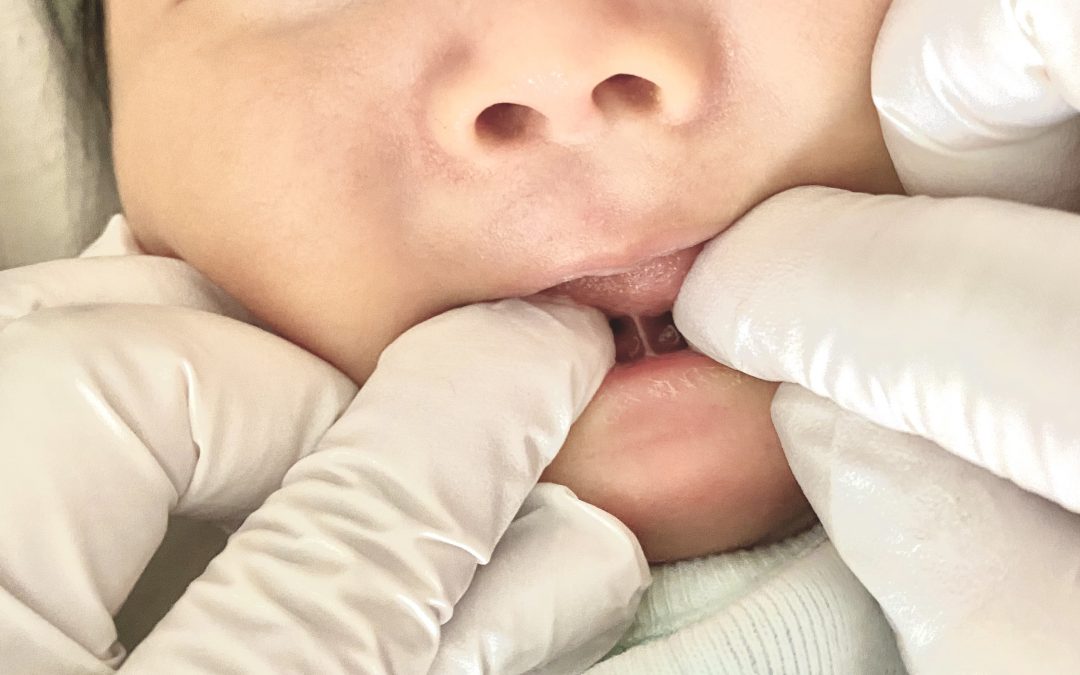Medical schools teach future doctors proper examination techniques. For example, if you don’t know where to put your stethoscope, you may miss a heart murmur. Unfortunately, no instructions are provided on how to examine a baby who is having breastfeeding issues. If a doctor is not familiar with certain aspects of human anatomy, they may be inclined to dismiss a problem as non-existent.
This is a tried and true guide on how to examine a baby who may have a tongue-tie or lip-tie.
The first important step is sufficient lighting. For example, a head-light is great for freeing up your two hands and letting you get a good view of the baby’s mouth.
The next step is positioning. This is the most common error made by medical professionals in diagnosing tongue-tie or lip-tie. The examiner and the parent should sit in front of one another, knees contacting. The baby is laid on the lap of this improvised table, head towards the examiner. One cannot assess an infant’s mouth when they are sitting in an upright position.
The goal of the examination is to determine the degree of tension of the frenulum of the lip and tongue on the encompassing tissue. It is accomplished by pulling on the upper lip and lifting up the tongue with two fingers and observing how the baby reacts. In the event that it appears to be awkward to them, they regularly wriggle. In the event that the frenulum is tight, it will frequently turn white or blanch. Take a look at where the frenulum is connecting to the gum-line or tongue.
This technique is also the preferred technique for obtaining pictures of the lip or tongue. You will need a second assistant to take the pictures once you have the lip and tongue in the proper position.
This video illustrates the examining procedure:
If you require urgent help with breastfeeding:
Call or text @ 416-804-9300

